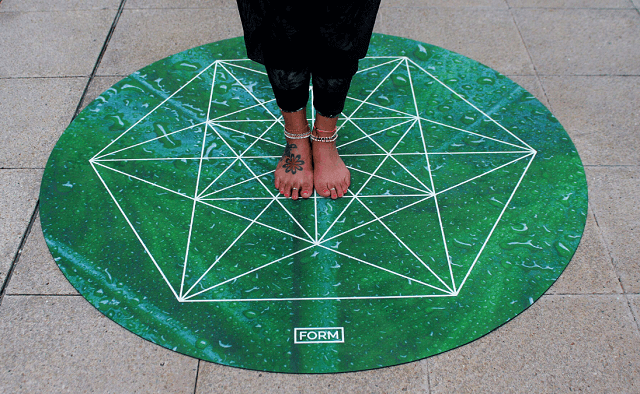Eco-Friendly Fitness Tips

As you focus more on your personal health and fitness, take a moment to think about the impact that your fitness routine and gear may be having on the environment. Check out these eco-friendly fitness tips that can help you stay fit and be kind to Mother Earth at the same time.
Eco-Friendly Fitness Tips
The fitness industry is packed with consumable products and energy-sucking systems, so it’s important to be careful and responsible.
Skip the Prepackaged Bottled Water
Did you know that bottled water production is 560 times more expensive than the tap water and up to 2,000 times the energy required to produce tap water?
That’s a lot of wasted energy and resources.
Instead of buying spring water in plastic bottles, especially considering it might be bad for your health, try to drink tap water in a reusable bottle whenever possible.
In the United States, the drinking water is safe, so there’s no reason to pay extra to support the expensive bottled water industry.
Concerned about what might be in your tap water? Invest in a home filtering system to ensure that you’re drinking the purest water available.

Choose Your Water Bottle Carefully
People throw over thirty-eight billion water bottles into landfills every year. Don’t contribute to that statistic!
Since you’re using tap water to hydrate instead of pricey, energy-sucking bottled water, you’ll need a high-quality water bottle.
You can reuse it again and again, keeping those flimsy disposable water bottles out of our landfills.
Look for a plastic water bottle that is BPA-free; you may even be able to find one with its own integrated filtration system.
You could also choose a glass water bottle, which is more fragile, yet completely recyclable.
Aluminum or stainless steel water bottles are another excellent choice— but be sure that the manufacturer hasn’t used BPA in the lining of the bottle.
Also, choose a bottle that has a wide enough mouth opening so you can clean it thoroughly, otherwise bacteria can build up inside it.
If you like drinking your water with straws, select a reusable metal straw or a flexible, recyclable plastic one.
Go Green at the Gym
Working out at home lets you be more flexible with your schedule and your routine.
But if you want to be part of a gym, choose one that is environmentally and socially responsible.
Eco-friendly gyms not only incorporate recyclable or sustainable supplies, they also implement green elements like solar power and energy-efficient lighting.
Work Out in Nature
Working out in nature allows you to pass on the pricey gym membership— and you won’t be using tons of electricity and energy as you power up treadmills and workout machines.
Instead, you’ll enjoy the beauty of the earth and experience varied terrain as you run or walk.
If you’re doing yoga or one of my favorite workouts, you can take the routine outside to your backyard or even to the courtyard or lawn at work.
If the weather or other factors make it impossible to exercise outdoors, bring the workout indoors.
You’ll be spending less money and using less energy than you would at a gym, even if it is an eco-conscious gym.

Select an Eco-Friendly Yoga Mat
Did you know that the cheaper yoga mats are often made with polyvinyl chloride?
That’s one of the most toxic plastics, leaching out dioxins, phthalates, and vinyl chloride!
Unfortunately, this type of mat is also not biodegradable. When you dispose of it, it will stay in the landfill forever.
Instead of choosing any random yoga mat, make a more thoughtful choice.
YogiApproved.com suggests a number of eco-friendly mats, including anti-microbial cork mats and large mats with extra cushioning, made from eco-friendly thermoplastic elastomer and all-natural rubber.
You’ll also find excellent earth-friendly mats made of sustainable juts, eco-PVC, recycled rubber, and non-toxic, latex-free TPE.

Look for mats that feature closed-cell technology, so that sweat and smells can soak inside and breed germs and bacteria.
As you become more eco-conscious with your fitness habits, try to minimize the amount of new gear you purchase.
Wash your sweaty clothes with eco-friendly detergent, bike to your fitness class instead of driving, and opt for a towel rather than disposable face wipes.
It may not seem like you’re making a huge difference— but just like with exercise, every little bit helps!






